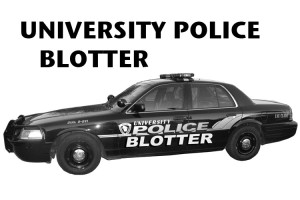Because university email is meant to be predominantly professional, it seems unusual to think something “phishy” could be
happening around campus.
In recent weeks, however, a number of students and faculty members have been reporting a strange email with the subject “+*Suspencion of your Email.”
Learning and Technology Services has appropriated this message as spam from a source attempting to phish information from university accounts.
LTS student lead Michael Abbott said the email probably gained popularity because of a student giving his or her email information to an outside source posing as a website.
“This usually happens when students choose a password like ‘password’,” Abbott said. “Once somebody gets into your email account, they have access to the entire university directory and begin sending emails from the ‘A’s’ down.”
A number of flaws exist in the email, which Abbott said should tip off anyone who gives it a quick read. With spelling errors and an inauthentic address, the majority of recipients identified it as fake without giving away information.
Senior Lisa Marco said although she’s never received an email like this before, she recognized the message was spam
immediately.
“I knew it was spam because I had taken my computer to LTS once before and they told me that typically if we get an email asking us to fill out our password and information for UW accounts it’s not real.”
Abbott said avoiding spam comes down to common sense — by minimizing the number of times a person gives out their email, they lower the risk of personally receiving these unwanted messages.
Although receiving spam is common, there are ways to identify spam or other malicious forms of email:
1. Misspelled words or faulty grammar — Often times, spammers who seem stupid because of misspelled words are smarter than they appear. LTS runs a search for dangerous key-words that could indicate a malicious source. By spelling words wrong, the spammers are attempting to fly under the radar.
2. Do they ask for your password? LTS services never require students to release password information directly. If the university has a problem with your password, they will take you through a PIN process.
3. What technology is being used? The spam email included a shortcut to a Google Docs spreadsheet in order to enter information. This is a sign of fraud because UW campuses are not Google-based. If this email were sent out to a school such as University of Minnesota, which uses Gmail, it would be a different story.
4. Is the email sender a legitimate source? If a real email were to be sent out by LTS regarding your account information, you would receive it from “LTS News”, not “University of Wisconsin Colleges” as the spam suggested.






